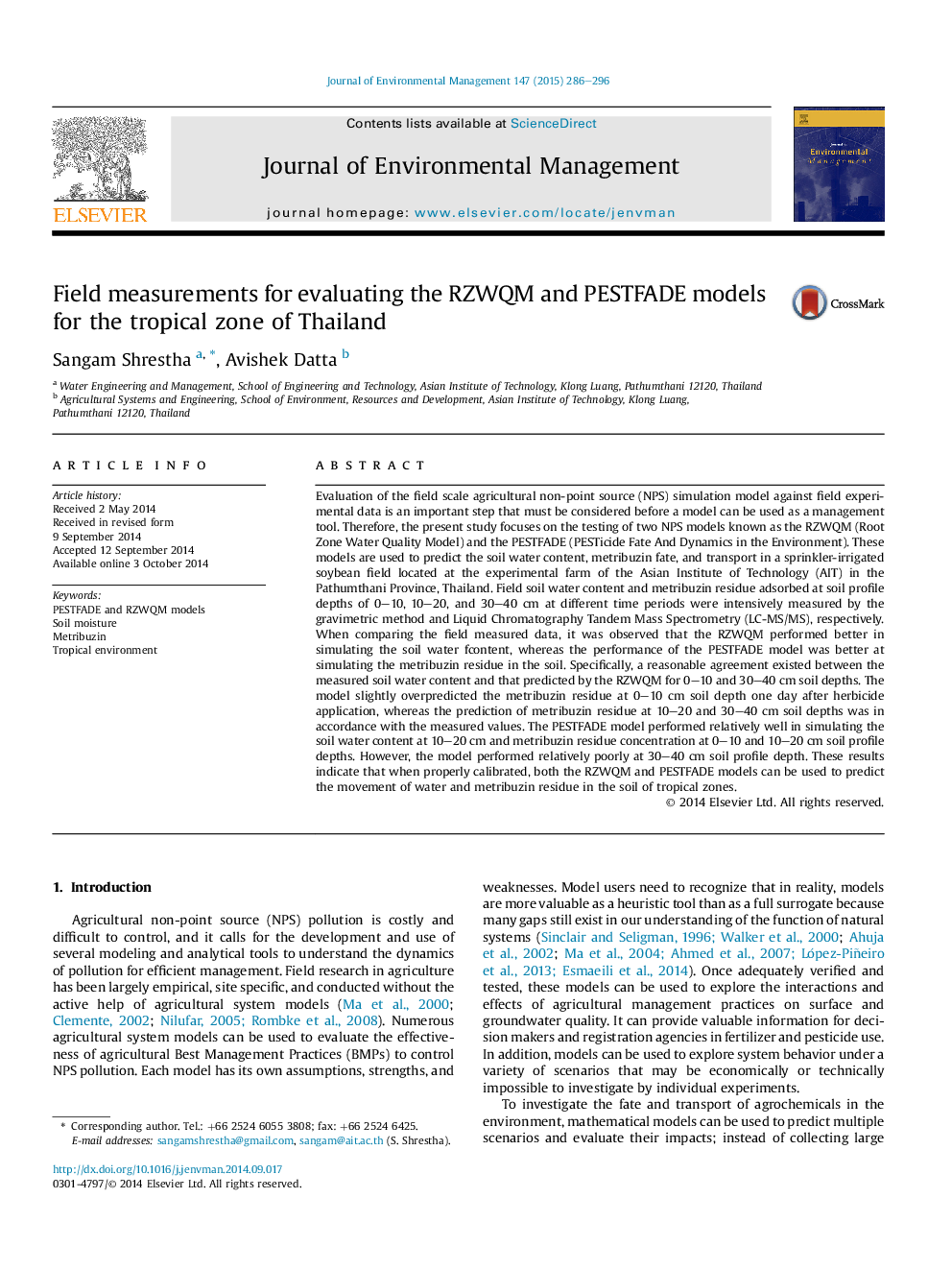| کد مقاله | کد نشریه | سال انتشار | مقاله انگلیسی | نسخه تمام متن |
|---|---|---|---|---|
| 1055671 | 1485265 | 2015 | 11 صفحه PDF | دانلود رایگان |

• We monitored and measured soil moisture and metribuzin residue in soils of Thailand.
• We evaluated non-point source simulation models, the RZWQM and the PESTFADE.
• The RZWQM performed better to simulate the soil water content.
• The PESTFADE model performed better to simulate the metribuzin residue in soil.
Evaluation of the field scale agricultural non-point source (NPS) simulation model against field experimental data is an important step that must be considered before a model can be used as a management tool. Therefore, the present study focuses on the testing of two NPS models known as the RZWQM (Root Zone Water Quality Model) and the PESTFADE (PESTicide Fate And Dynamics in the Environment). These models are used to predict the soil water content, metribuzin fate, and transport in a sprinkler-irrigated soybean field located at the experimental farm of the Asian Institute of Technology (AIT) in the Pathumthani Province, Thailand. Field soil water content and metribuzin residue adsorbed at soil profile depths of 0–10, 10–20, and 30–40 cm at different time periods were intensively measured by the gravimetric method and Liquid Chromatography Tandem Mass Spectrometry (LC-MS/MS), respectively. When comparing the field measured data, it was observed that the RZWQM performed better in simulating the soil water fcontent, whereas the performance of the PESTFADE model was better at simulating the metribuzin residue in the soil. Specifically, a reasonable agreement existed between the measured soil water content and that predicted by the RZWQM for 0–10 and 30–40 cm soil depths. The model slightly overpredicted the metribuzin residue at 0–10 cm soil depth one day after herbicide application, whereas the prediction of metribuzin residue at 10–20 and 30–40 cm soil depths was in accordance with the measured values. The PESTFADE model performed relatively well in simulating the soil water content at 10–20 cm and metribuzin residue concentration at 0–10 and 10–20 cm soil profile depths. However, the model performed relatively poorly at 30–40 cm soil profile depth. These results indicate that when properly calibrated, both the RZWQM and PESTFADE models can be used to predict the movement of water and metribuzin residue in the soil of tropical zones.
Journal: Journal of Environmental Management - Volume 147, 1 January 2015, Pages 286–296